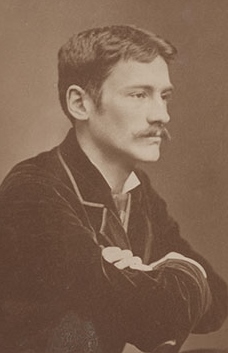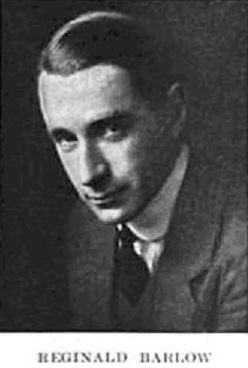
Charles Henry Alston was an American painter, sculptor, illustrator, muralist and teacher who lived and worked in the New York City neighborhood of Harlem. Alston was active in the Harlem Renaissance; Alston was the first African-American supervisor for the Works Progress Administration's Federal Art Project. Alston designed and painted murals at the Harlem Hospital and the Golden State Mutual Life Insurance Building. In 1990, Alston's bust of Martin Luther King Jr. became the first image of an African American displayed at the White House.

The Federal Art Project (1935–1943) was a New Deal program to fund the visual arts in the United States. Under national director Holger Cahill, it was one of five Federal Project Number One projects sponsored by the Works Progress Administration (WPA), and the largest of the New Deal art projects. It was created not as a cultural activity, but as a relief measure to employ artists and artisans to create murals, easel paintings, sculpture, graphic art, posters, photography, theatre scenic design, and arts and crafts. The WPA Federal Art Project established more than 100 community art centers throughout the country, researched and documented American design, commissioned a significant body of public art without restriction to content or subject matter, and sustained some 10,000 artists and craft workers during the Great Depression. According to American Heritage, “Something like 400,000 easel paintings, murals, prints, posters, and renderings were produced by WPA artists during the eight years of the project’s existence, virtually free of government pressure to control subject matter, interpretation, or style.”

African-American art is a broad term describing visual art created by African Americans. The range of art they have created, and are continuing to create, over more than two centuries is as varied as the artists themselves. Some have drawn on cultural traditions in Africa, and other parts of the world, for inspiration. Others have found inspiration in traditional African-American plastic art forms, including basket weaving, pottery, quilting, woodcarving and painting, all of which are sometimes classified as "handicrafts" or "folk art".

Thomas Wilmer Dewing was an American painter working at the turn of the 20th century. Schooled in Paris, Dewing was noted for his figure paintings of aristocratic women. He was a founding member of the Ten American Painters and taught at the Art Students League of New York. The Freer Gallery of Art at the Smithsonian Institution has a collection of his works. He was the husband of fellow artist Maria Oakey Dewing.

Harlem Hospital Center, branded as NYC Health + Hospitals/Harlem, is a 272-bed, public teaching hospital affiliated with Columbia University. It is located at 506 Lenox Avenue in Harlem, Manhattan, New York City and was founded on April 18, 1887.

Reginald Harry Barlow was an American stage and screen character actor, author, and film director. He was a busy performer in Hollywood films of the 1930s.
Edwin Justus Mayer was an American screenwriter. He wrote or co-wrote the screenplays for 47 films between 1927 and 1958.

Thelma Beatrice Johnson Streat (1912–1959) was an African-American artist, dancer, and educator. She gained prominence in the 1940s for her art, performance and work to foster intercultural understanding and appreciation.

Georgette Seabrooke, was an American muralist, artist, illustrator, art therapist, non-profit chief executive and educator. She is best known for her 1936 mural, Recreation in Harlem at Harlem Hospital in New York City, which was restored and put on public display in 2012 after being hidden from view for many years.
Bernhard Jetter was a Kingdom of Württemberg-born soldier in the U.S. Army who served with the 7th U.S. Cavalry during the Indian Wars. He was one of twenty men who received the Medal of Honor for gallantry against the Dakota at the Battle of Wounded Knee, but now called the Wounded Knee Massacre, in South Dakota on December 29, 1890.

Latta Malette "LM" Autrey was an American politician who served one term as the 25th mayor of Orlando, Florida, from 1926 to 1929. Two of his former homes are now designated as historical landmarks, the Autrey-Williams House in Newton, Texas, built in 1912 and currently being restored by David Holmes, as well as the L. M. Autrey House in the Lake Eola Heights Neighborhood in Orlando, Florida.

The Harlem Community Art Center was a Federal Art Project community art center that operated from 1937 to 1942. It influenced various budding artists intent on depicting Harlem and led to the formation of the Harlem Arts Alliance. It became a countrywide exemplar for others, notably the South Side Community Art Center in Chicago.

Myra Adele Logan is known as the first African American female physician, surgeon, and anatomist to perform a successful open-heart surgery. Following this accomplishment, Logan focused her work on children's heart surgery and was involved in the development of the antibiotic Aureomycin which treated bacterial, viral, and rickettsial diseases with the majority of her medical practice done at the Harlem Hospital in New York. Logan attended medical school during the pre–Civil Rights era. The majority of black female physicians in this time period were forced to attend segregated schools. Earning a medical degree as an African American woman during this time period was extremely difficult.
The Harlem Artists Guild (1935–41) was an African-American organization founded by artists including Augusta Savage, Charles Alston, Elba Lightfoot, Louise E. Jefferson and bibliophile Arthur Schomburg with the aims of encouraging young talent, providing a forum for the discussion of the visual arts in the community, fostering understanding between artists and the public through education towards an appreciation of art, focusing on issues of general concern to Black artists such as racism, poverty and unemployment, and cooperating with agencies to improve conditions and raise standards of living and achievement among African-American artists. It is said to have had its origins in the dissatisfaction of African-American artists with the activities of the Harmon Foundation, and was described by co-founder Alston as "a pressure group to get more black artists on the federal projects."
The 306 Group were a collective of African American artists who worked and socialized together in Harlem, New York City in the 1930s. The name of the group was derived from the address of a studio space, 306 W. 141st Street, used by two of the artists, Charles Alston and Henry Bannarn. Many of these artists also worked with the Federal Art Project.
James Lesesne Wells was an African American graphic artist, print-maker, and painter associated with the Harlem Renaissance. He was an influential art professor at Howard University from 1929 to 1968 and is considered a pioneer in modern art education.
Harold Dunham Speakman was an early twentieth-century American author and artist, best known for the travel narratives Here’s Ireland (1925) and Mostly Mississippi (1927).
Edward Alden Jewell was an American newspaper and magazine editor, art critic and novelist. He was the New York Times art editor from July 1936 until his death.

Lloyd Raymond "Bill" Ney was an American painter and sculptor known for his textural, non-objective work. During the New Deal, his New London Facets for New London, Ohio was the only abstract art mural commissioned by the Treasury Department for a U.S. Post Office. He exhibited at the Guggenheim during his lifetime, and some of his paintings are in that museum's permanent collection.
Robert Savon Pious was an American painter and illustrator who is best known for producing cartoons, portraits, and illustrations for books, newspapers, and pulp magazines. In 1929, Pious received a prestigious Spingarn Prize for drawing from the William E. Harmon Foundation. In 1940, he won first prize in a national poster contest for the American Negro Exposition in Chicago.











